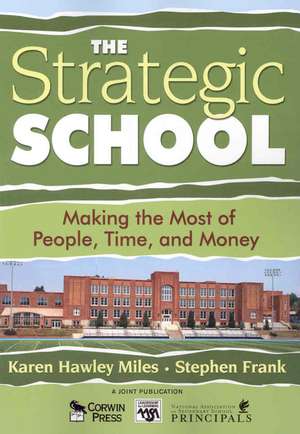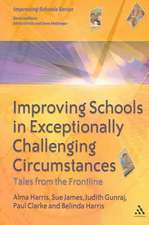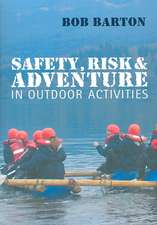The Strategic School: Making the Most of People, Time, and Money: Leadership for Learning Series
Autor Karen Hawley Miles, Stephen Franken Limba Engleză Paperback – 28 iul 2008
Boston Public Schools, MA
"A powerful new lens for looking at school resources by fundamentally changing the question from 'How much money do schools need to succeed?' to 'How well are resources being used to ensure student success?'"
—Richard Murnane, Economist and Professor
Harvard Graduate School of Education
Strategically reorganize school resources to support instructional and performance priorities!
How can schools best use the resources they already have? That question is at the heart of this inspiring book for school and district administrators challenged with increasing student performance without additional funding. Exploring the link between purposeful resource allocation and academic achievement, Karen Hawley Miles and Stephen Frank demonstrate how educational leaders can develop successful and strategic schools by assessing how well they use all available resources—people, time, and money—and by creating effective alternatives to meet goals.
The authors use their extensive research with urban schools and districts to present case studies of schools that successfully reorganized resources to implement the "Big 3 Guiding Resource Strategies": improving teaching quality, creating individual attention, and maximizing academic time. The Strategic School offers planning guides, checklists, worksheets, and strategies aligned with ISLLC standards to help leaders:
- Assess current resource use in new ways that go beyond the typical budget review
- Organize resources more creatively and flexibly
- Craft a master schedule that works
- Connect resource allocation to student and school performance
By encouraging school leaders to set clear priorities for student learning, the authors provide the support and strategies that leaders need to make resource decisions and select smart alternatives that best serve their school communities.
Preț: 289.91 lei
Nou
Puncte Express: 435
Preț estimativ în valută:
55.49€ • 60.30$ • 46.64£
55.49€ • 60.30$ • 46.64£
Carte disponibilă
Livrare economică 01-15 aprilie
Preluare comenzi: 021 569.72.76
Specificații
ISBN-13: 9781412904179
ISBN-10: 141290417X
Pagini: 232
Dimensiuni: 178 x 254 x 14 mm
Greutate: 0.51 kg
Ediția:1
Editura: SAGE Publications
Colecția Corwin
Seria Leadership for Learning Series
Locul publicării:Thousand Oaks, United States
ISBN-10: 141290417X
Pagini: 232
Dimensiuni: 178 x 254 x 14 mm
Greutate: 0.51 kg
Ediția:1
Editura: SAGE Publications
Colecția Corwin
Seria Leadership for Learning Series
Locul publicării:Thousand Oaks, United States
Recenzii
“Too often, educators think that the greatest resource we can get is more funding to hire more staff. This book shows that a lot can be done by re-examining the current use of our resources.”
"This book made me rethink how to spend in a more creative manner that allows all students to benefit. The resource worksheets are very helpful for both the veteran and rookie administrator working to prioritize and re-evaluate effective means of spending limited funding.”
“How you spend your resources really does speak to the ethics, morals, and values about what is important. As a former principal and now district administrator, I use these ideas each day to help schools leverage their resources in strategic and creative ways to meet students’ needs.”
"A powerful new lens for looking at school resources by fundamentally changing the question from 'How much money do schools need to succeed?' to 'How well are resources being used to ensure student success?' The careful review of research and the practical case studies from the authors' extensive experience provide practitioners, administrators, and school developers with a deep understanding of effective resource use and the tools to turn that knowledge into an strategy that works for kids.”
"This book made me rethink how to spend in a more creative manner that allows all students to benefit. The resource worksheets are very helpful for both the veteran and rookie administrator working to prioritize and re-evaluate effective means of spending limited funding.”
“How you spend your resources really does speak to the ethics, morals, and values about what is important. As a former principal and now district administrator, I use these ideas each day to help schools leverage their resources in strategic and creative ways to meet students’ needs.”
"A powerful new lens for looking at school resources by fundamentally changing the question from 'How much money do schools need to succeed?' to 'How well are resources being used to ensure student success?' The careful review of research and the practical case studies from the authors' extensive experience provide practitioners, administrators, and school developers with a deep understanding of effective resource use and the tools to turn that knowledge into an strategy that works for kids.”
Cuprins
Foreword
Preface
Acknowledgments
About the Authors
Part I. The "Big Three" Guiding Resource Strategies
1. Why Rethink School Resources Now?
2. How Do Resources Matter?
Part II. How Strategic Schools Use People, Time, and Money
3. Investing in Teaching Quality
4. Creating Individual Attention and Personal Learning Environments
5. Maximizing Academic Time and Linking It to Learning Needs
Part III. How to Make the Most of Your School's People, Time, and Money
6. Tools for Strategic Schools: How Well Does Your School Use People, Time, and Money?
7. How to Group Students and Assign Teachers
8. How to Craft a Master Schedule That Works
9. How to Strategically Improve Teaching Quality
10. Putting It All Together
11. Redefining Systems and Policies to Support Strategic Schools
References
Index
Preface
Acknowledgments
About the Authors
Part I. The "Big Three" Guiding Resource Strategies
1. Why Rethink School Resources Now?
2. How Do Resources Matter?
Part II. How Strategic Schools Use People, Time, and Money
3. Investing in Teaching Quality
4. Creating Individual Attention and Personal Learning Environments
5. Maximizing Academic Time and Linking It to Learning Needs
Part III. How to Make the Most of Your School's People, Time, and Money
6. Tools for Strategic Schools: How Well Does Your School Use People, Time, and Money?
7. How to Group Students and Assign Teachers
8. How to Craft a Master Schedule That Works
9. How to Strategically Improve Teaching Quality
10. Putting It All Together
11. Redefining Systems and Policies to Support Strategic Schools
References
Index
Notă biografică
Karen Hawley Miles is executive director and founder of Education Resource Strategies, a nonprofit organization in Boston, Massachusetts, that specializes in strategic planning, organization, and resource allocation in urban public school districts. Her work aims to help states, districts, and schools rethink resource allocation and empower principals to create great schools and redirect resources to promote excellent teaching, individual attention for children, and productive instructional time. Miles has worked intensively with urban districts in Los Angeles, Chicago, Albuquerque, Boston, Baltimore, Providence, Rochester and Cincinnati to deeply analyze and improve their funding systems, school-level resource use, and investment in professional development. She has taught school leaders at Harvard University, in school districts, with New Leaders for New Schools, and with the Broad Institute for School Boards. Currently, she directs a multiyear project funded by the Gates Foundation to understand the costs and organization of small schools and to help districts organize to better support them. Prior to her work at Education Resource Strategies, she worked at Bain & Company as a strategy and management consultant for hospitals and corporations. She has a BA in economics from Yale University and a doctorate in education from Harvard University, specializing in school organization, change, and finance.
Descriere
This book offers numerous strategies and case studies that illustrate how to invest in teacher quality and improve learning environments through creative allocation of existing resources.
























